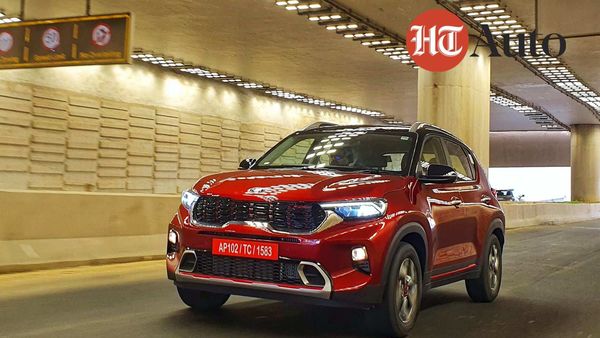
After the Seltos and Carnival luxury minivan, Kia Motors is ready with its third offering for India in the form of the Sonet subcompact SUV that goes on sale from 18 September. Kia Sonet has managed to create quite a stir and will enter the extremely lucrative subcompact SUV segment that is also hotly contested.
The Indian car buyer audience has shown a preference for SUVs as of late and Kia seems to have felt what car customers here want as it struck a chord with its initial offerings, especially Seltos. But the game is bigger this time and there is much more at stake.
The Sonet has positioned itself in a segment that is booming not only in India, but globally. So much so, that the subcompact segment is consuming the demands of the sedan segment. As a result, almost all car companies are already present in this space or are planning a new product for future launch. In India, Maruti’s Vitara Brezza set sales standards in the subcompact SUV space, while the Hyundai Venue has now managed to gain something of an advantage. And good for Kia, since the Sonet is a technical cousin of the Venue and, underneath, they both share the same DNA.
So what is Sonet about?
Like the Seltos, Kia also follows the same dual-tuning concept in the Sonet. There will be a Techline trim and a premium GT Line. While the overall design on the outside remains the same, there will be several key elements that will differentiate the two lines. For example, the Techline trims will have a slightly basic livery compared to the GT Line, which will feature the dedicated GT Line emblem, sporty red accents, all black interiors, and more. On the other hand, Techline trims will use more silver accents with slightly calm, easy-to-see touches of style.
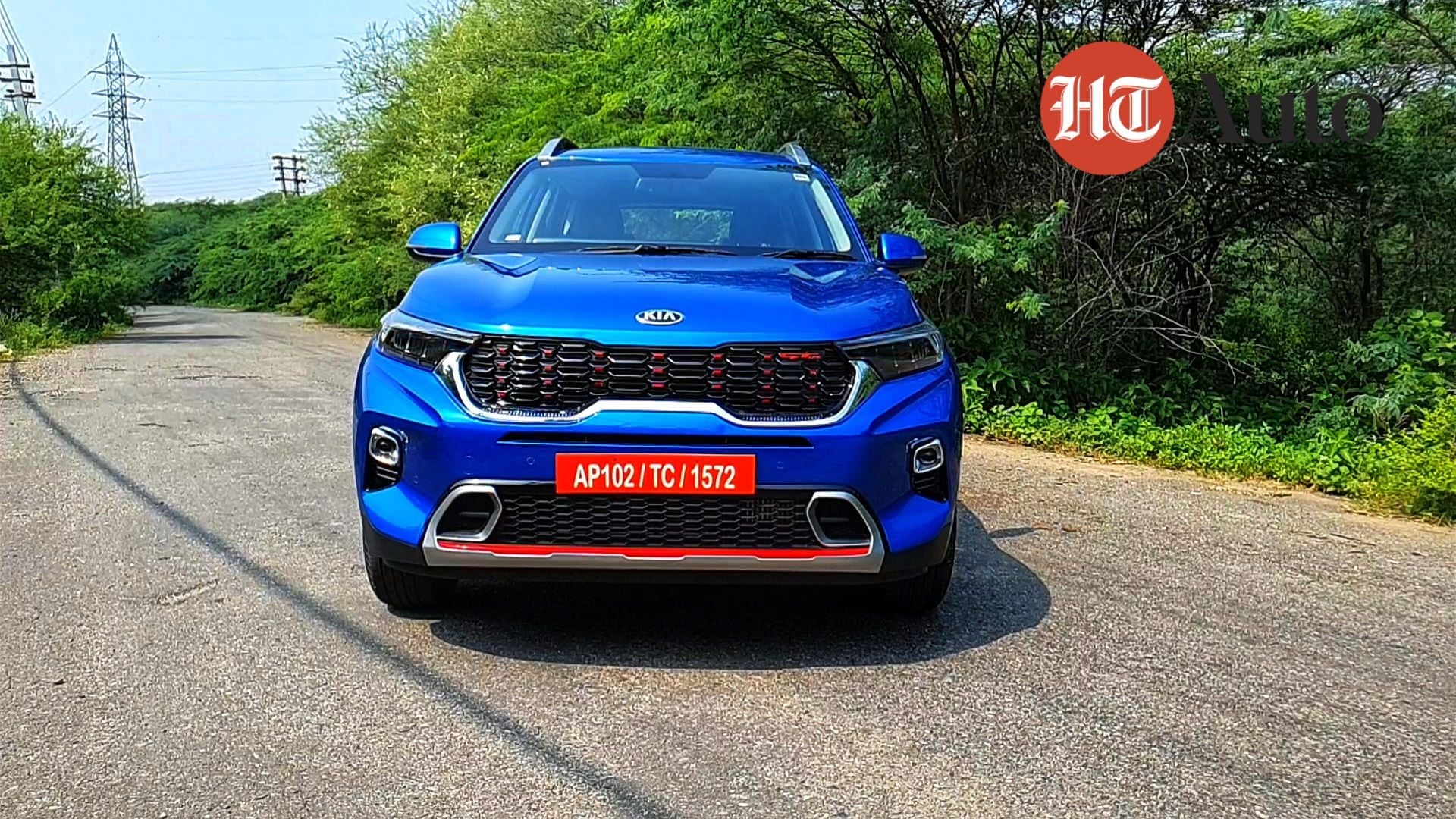
The Sonet packs a very daring styling package and is certainly an eye-catcher on the roads. Its tiger-nose front grille is flanked by distinctive Crown Jewel LED headlights and “Heartbeat” LED DRLs that make its appearance unique. On the side, the under 4-meter SUV has a clean look and parts like roof rails, sharp-looking alloy wheels, and bulbous wheel arches add to its masculine appearance. And what really stands out is its connected taillight unit with LED taillights and dual silencer design on the rear bumper.
How is it inside?
Kia has left no stones unturned to ensure that the Sonet feels very premium and luxurious, especially to buyers in this segment. The interior space, especially the dashboard, has old-school vibes as it feels narrow and tall, and you’ll find plenty of vertical elements, including vents. And what draws instant attention is the huge 10.25-inch touchscreen that appears to be part of the driver’s display as it is located on the same panel. Higher models have a 4.2-inch driver’s display with advanced driver assistance displays.
Overall quality levels are also appreciable, living up to benchmarks, including the Hyundai Venue. Specific to the GT Line in the interior is the completely black treatment, red stitching and also the D-Cut steering wheel.
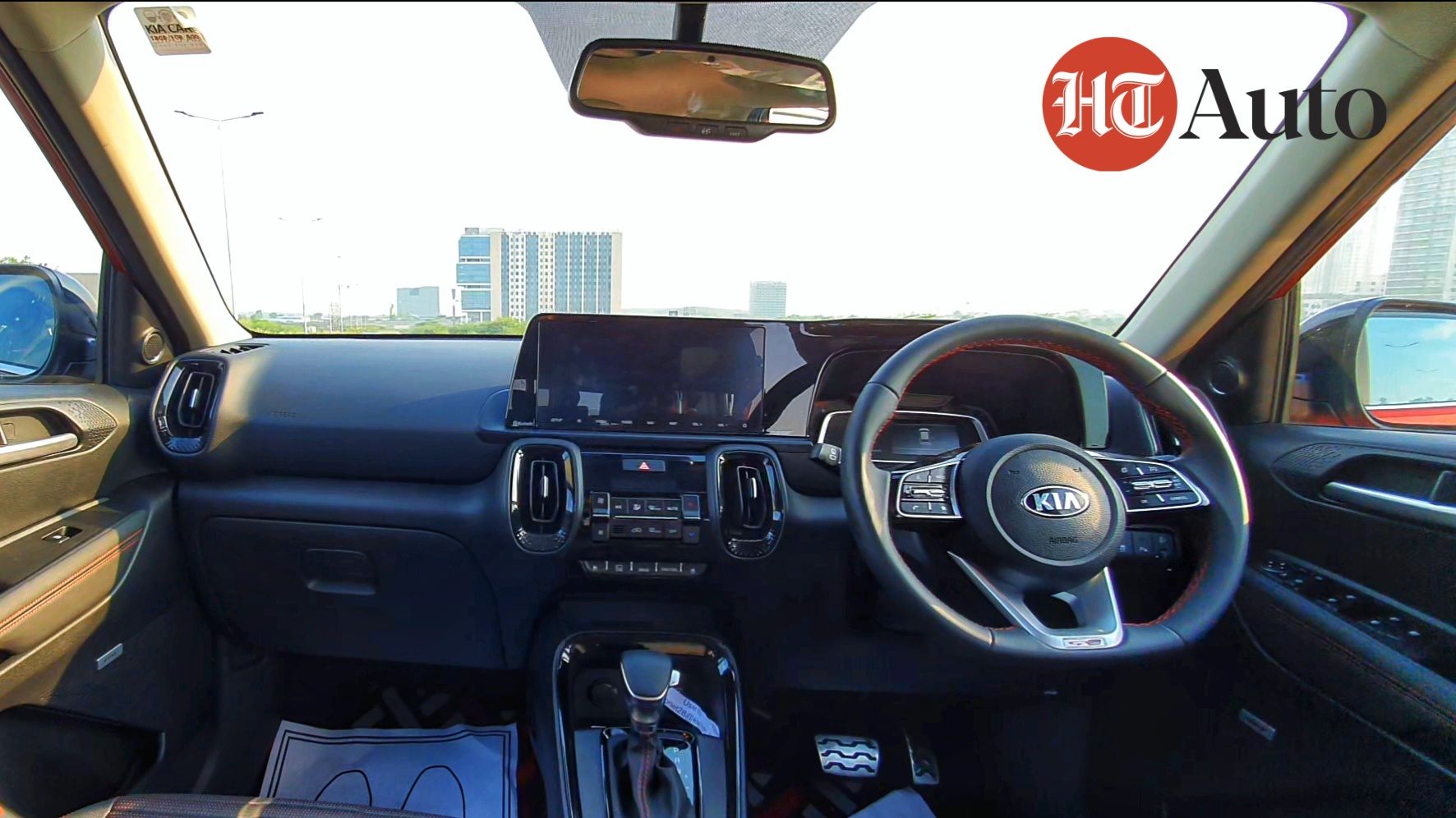
There are plenty of front-row storage spaces to hold the usual daily paraphernalia, and the taller trims also benefit from the wireless charging slot that has been placed in a very convenient position on the center console.
Kia has also upped the ante with the addition of features including Over The Air upgrades and UVO connectivity. With the latter, you can control certain functions within the Sonet remotely such as lock / unlock, engine start and stop, AC, and much more through a dedicated smartphone app. While the remote control of some car features seems intriguing, it is not exactly accurate in functionality. As commands sometimes take longer than expected to execute and other times they just fail. But that also depends on your network connectivity, and of course location.
Sonet also has an AI speech recognition system that is quite practical to use. It responds to your ‘Hello Kia’ input and there is also a dedicated button on its multifunction steering wheel for the same.
Also what is worth mentioning is that Kia claims that the Sonet has 33 segment-leading features and, although not all can be mentioned in this story, the fact that it has a Bose audio system with 7 speakers, ventilated front seats, wireless charger, sound ambient lighting. and more, it just makes the Sonet the first car of its kind, when features are taken into account.

How are the rear seats?
Hop in the rear seats and the Sonet is impressive in this department, too. There is ventilation in the rear seat above which is a display that indicates the status of the air purifier, under this panel there is a space to store your phone and there is also a USB charging socket which is of course a welcome addition . Rear seat passengers also have a palm rest for added support.
The only downside to the Sonet’s second row is the overall space. While the headroom is plenty for 5’10, the legroom just isn’t the best. The overall space in the back is more than comfortable for two, while three will definitely rub shoulders.
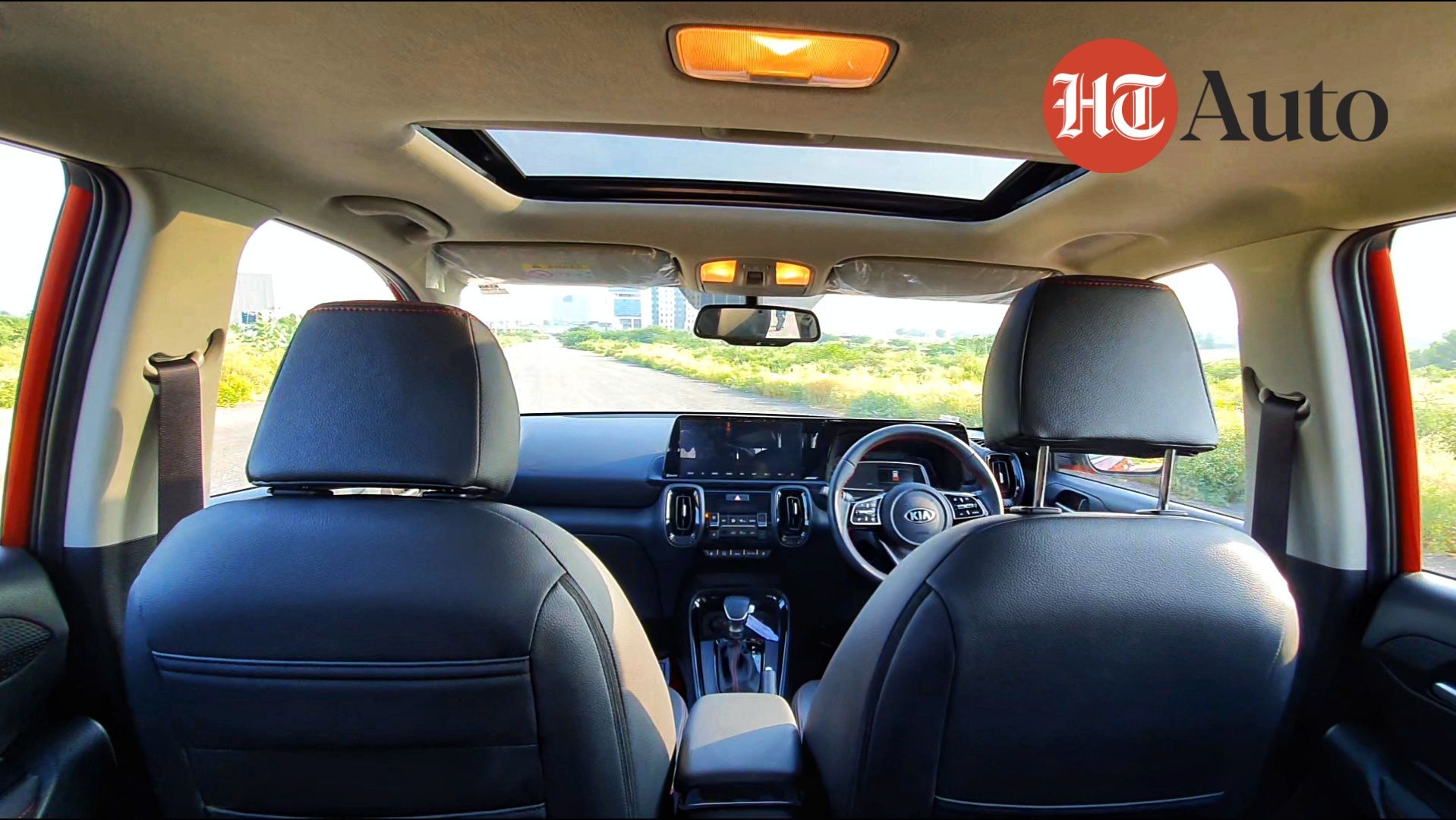
How do you drive?
Sonet is all about an extensive list of options, be it in terms of its variants, features, engine or transmission. There is a lot in the Sonet and it is anything but basic. It has 4 different engines and 5 transmission options. And we had the opportunity to drive the 1.0-liter turbo petrol engine with 6-speed iMT transmission first.
The engine feels surprisingly refined and sporty right out of the box and picks up the pace in no time. There is an increase from 2000 rpm to 3000 rpm, thereafter the power is distributed linearly over the entire rev range. The engine also has enough torque every time you make quick transitions on the highway to pass other vehicles. And within the city limits, it is fairly quiet and convenient. Moving on to the iMT, the gearbox is the same as seen in the Hyundai Venue. It’s basically a manual minus a clutch. All you need to do is change gears without the clutch and let your left leg go to sleep.
We also had the opportunity to drive the 1.5-liter diesel (115hp / 250Nm) with a 6-speed smart AT gearbox. The higher torque on the diesel was visible from just 2000 rpm and the engine had very strong mid-range power, as you would expect from a unit of its size. It felt shocking and very responsive, which can also be attributed to its 6-speed smart AT gearbox that shifts gears quickly and no significant lag is felt when shifting gears up or down. Perhaps one of the best engine / transmission combinations in the entire Sonet line.
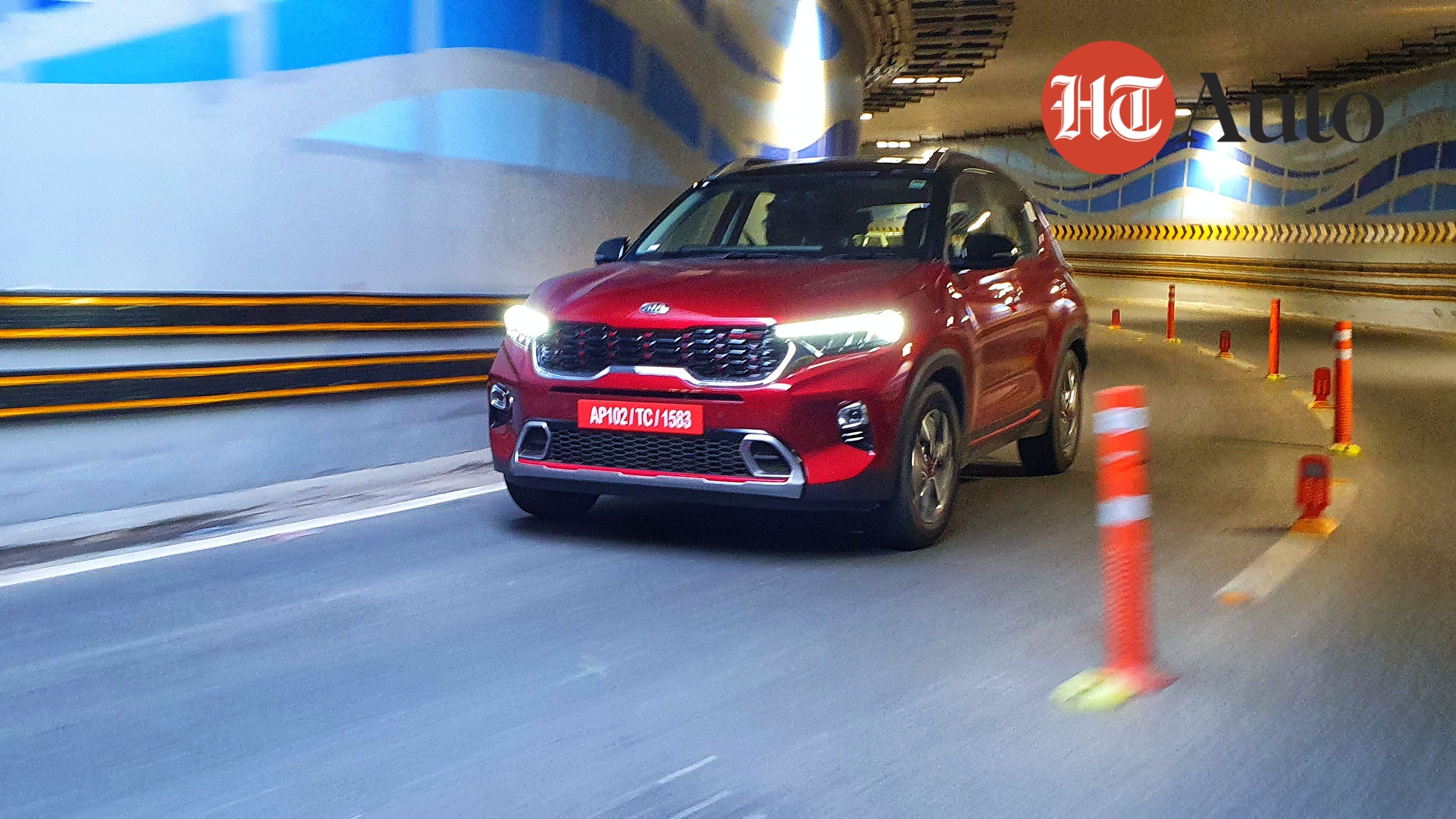
How is the quality of the trip?
The suspension setup feels balanced, but it’s a bit stiffer, unlike the Venue, which has a smoother ride. Thanks to the slightly stiffer geometry, it promises to keep the rider hooked on turns while trying to absorb all the ripples. Also, there isn’t much to talk about when you’re hugging a corner.
While the suspension feels balanced and manages to eliminate all the ‘minor ripples’ on city roads, a slightly stiffer setting gives you a hard, bumpy ride on uneven surfaces. So if your city has bad roads, Sonet may not be the smartest choice.

Verdict:
It looks like Kia has another potential winner on its hand in the form of the Sonet and why? It’s easy, Sonet has what it takes to set the segment on fire, and if Kia gets the price right again like it did Seltos, Sonet will help Kia consolidate its market position. It will also be quite interesting to see how it fares against its arch rival, the Hyundai Venue, which is basically the same wine in a different bottle.
.